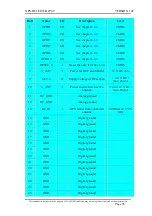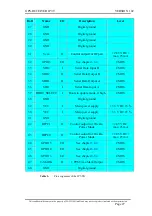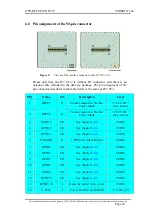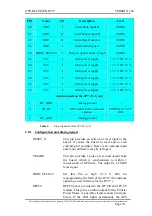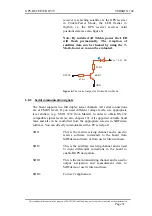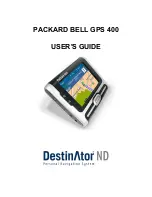
GPS-RECEIVER JP7-T
VERSION 1.02
Note: NMEA input messages 100 to 105 are SiRF proprietary
NMEA messages. The MSK NMEA string is as defined by the
NMEA 0183 standard.
7.2.3 Transport
Message
Start Sequence
Payload
Checksum
End Sequence
$PSRF<MID>
1
Data
2
*CKSUM
3
<CR> <LF>
4
1. Message Identifier consisting of three numeric characters. Input messages begin at MID 100.
2. Message specific data. Refer to a specific message section for <data>...<data>definition.
3. CHECKSUM is a two-hex character checksum as defined in the NMEA specification. Use of
checksums is required on all input messages.
4. Each message is terminated using Carriage Return (CR) Line Feed (LF) which is \r\n which is hex
0D 0A. Because \r\n are not printable ASCII characters, they are omitted from the example
strings, but must be sent to terminate the message and cause the receiver to process that input
message.
CheckSum
The checksum is 15-bit checksum of the bytes in the payload data. The
following pseudo code defines the algorithm used.
Let message to be the array of bytes to be sent by the transport.
Let
msgLen
be the number of bytes in the message array to be transmitted.
Clearly to say, the string over which the checksum has to be calculated is
between the “
$
” and “
*
” (without characters “
$
” and “
*
”).
Index = first
checkSum = 0
while index < msgLen
checkSum = ch message[index]
checkSum = checkSum AND (2
15
-1).
Note: All fields in all proprietary NMEA messages are required,
none are optional. All NMEA messages are comma delimited.
This confidential document is the property of FALCOM GmbH and may not be copied or circulated without permission.
Page 38



